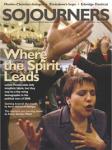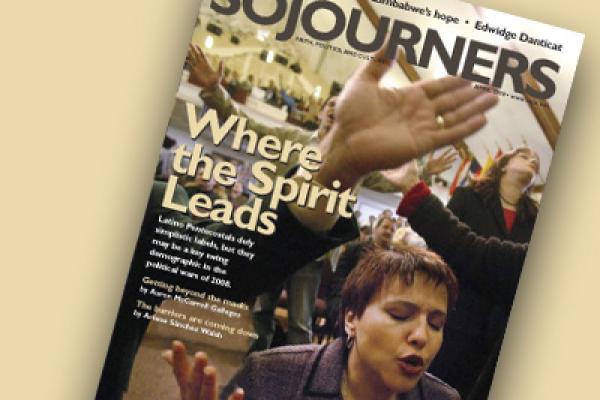When Charles Finney preached , people listened. Finney, considered one of America’s greatest evangelists of the 19th century and a leader of what later become known as the “Second Great Awakening,” drew enthusiastic crowds at his revival services.
A contemporary of Finney’s, Rev. Charles P. Bush, described the scene at one of his revivals: “The churches were not large enough to hold the multitudes that thronged to hear him. After the pews were all filled, the aisles and areas would be supplied with chairs and benches; persons would sit as close as possible all over the pulpit stairs; and still others, men and women, and children, would stand wherever standing-room could be found, throughout a long and exhausting service.”
Finney’s preaching had a lasting effect, not only on the personal lives of those who heard him but also on the broader society. In his memoirs, Finney himself described the impact of one his revivals: “This revival made a great change in the moral state and subsequent history of Rochester. The great majority of the leading men and women in the city were converted. ... From night to night I had been making appeals to the congregation, and calling forward those that were prepared to give their hearts to God; and large numbers were converted every evening.”
Finney, who believed strongly that salvation came through grace alone by faith, saw “works”—the way people act in the world, including, in his case, adamant opposition to the abomination of slavery—as evidence of faith. He wrote, “When I first went to New York, I had made up my mind on the question of slavery, and was exceedingly anxious to arouse public attention to the subject. ... in my prayers and preaching, I so often alluded to slavery, and denounced it, that a considerable excitement came to exist among the people.”
He later commented that acceptance of slavery in the South seemed to block the religious awakening that was happening elsewhere. “A divine influence seemed to pervade the whole land,” Finney wrote. “Slavery seemed to shut it out from the South. The people there were in such a state of irritation, of vexation, and of committal to their peculiar institution, which had come to be assailed on every side, that the Spirit of God seemed to be grieved away from them. There seemed to be no place found for him in the hearts of the Southern people at that time.”
Finney, of course, wasn’t alone in linking revival to social reform. Jonathan Blanchard was the founder of Wheaton College and another leader of 19th-century evangelism. In his 1839 commencement address at Oberlin College, which he titled “A Perfect State of Society,” Blanchard affirmed that “every true minister of Christ is a universal reformer, whose business it is, so far as possible, to reform all the evils which press on human concerns.” For Blanchard, being a “minister of Christ” meant, in today’s terms, becoming an activist on behalf of social justice.
When critics of the day argued that Christians ought not to be focused on this world, Blanchard responded that while “the kingdom is not of this world, it is in it.” Blanchard’s evangelical approach to social reform understood the balance: On the one hand, imperfect human beings cannot, through their own power, bring about the kingdom of God on earth—that would constitute “works righteousness,” a reliance on something other than God’s grace. But at the same time, Christians are called to “reform all the evils” in the world, as Blanchard put it.
Blanchard approached the question of social reform—and specifically the abolition of slavery—in theological terms. He wrote, “Slaveholding is in itself sinful and the relationship between master and slave a sinful relationship.” It was not, in Blanchard’s view, merely a violation of human rights, or a crime—it was a sin. The abolition of slavery became a matter of faith for these followers of Christ.
Finney, like Blanchard, did not conflate “revival” and “reform” into one; he didn’t stop calling people to conversion. Rather, he saw social reforms—such as temperance and the abolition of slavery—as “appendages” of revival, the fruits of conversion. Finney’s use of the term “appendage” did not imply that he thought the reforms he was involved in were unimportant—in fact, he devoted much of his life to these reform movements. Rather, the metaphor emphasized that the “heart” of evangelism was conversion to Christ, with the natural outgrowth of reform being like a person’s arms or legs—appendages, yes, but certainly significant to a person’s existence, and neither discretionary nor expendable.
For Finney, involvement in reform efforts was not optional, and the lack of such involvement hampered the revival movement. In his “Lectures on Revivals of Religion,” Finney wrote, “Revivals are hindered when ministers and churches take wrong ground in regard to any question involving human rights.” Note his emphasis: It was the revivals that were hindered when believers failed to act on behalf of human rights. In fact, Finney felt that the spiritual vitality of a church was sapped by a failure to embrace reform. When the church fails to speak out on such issues, Finney wrote, “She is perjured, and the Spirit of God departs from her.” Commitment to the reform of society was seen by Finney as a spiritual issue, a sign of holiness, and not just a matter of “secular” politics.
Finney, who has been called the “father of modern revivalism,” called for revival as a means of “breaking the power of the world and of sin over Christians.” The essence of sin was selfishness, Finney taught, and to be converted from sin meant to turn from selfishness toward benevolence, doing good to all and becoming “useful” in the world. The key vehicles for these actions included hundreds of “benevolent societies” that focused on every imaginable social evil, from alcohol and slavery to the mistreatment of women. He could even be considered an early feminist, in that—in the face of criticism—he invited women to speak publicly at his revivals. Finney served as president of Oberlin, which became the first college in the country to award bachelor’s degrees to women and African Americans, and which was a stop on the “underground railroad” for escaping slaves.
OTHER 19TH-CENTURY evangelists similarly connected Christian conversion with social reform. A prominent example was Henry Ward Beecher, whom historian William G. McLoughlin called “unquestionably the outstanding popular spokesman of evangelical religion in 19th-century America,” as well as a “model for evangelical preachers of his day across the nation.” Beecher argued that for Christian preaching to be legitimate, it must address the issues of the day—and disturb the status quo: “That [person] who so preaches Christ, doctrinally or historically, that no one takes offense, no one feels rebuked, no one trembles, is not a legitimate and faithful preacher of Christ” (see ‘Was Christ Not a Reformer?’ page 30).
Beecher was clear in the conviction that the central focus of Christian preaching was always “Jesus Christ, and him crucified” (1 Corinthians 2:2). But Beecher didn’t stop there. He went on to address “all reformations of evil in society”—in other words, questions of social justice—which in Beecher’s view must spring from the “vital center” of “preaching Christ.” Addressing social evils, however, was not optional for the Christian: It would be a “dangerous thing,” he wrote, to preach in a way that was not a constant rebuke to “all the evil in the community.”
Many of the other leaders of the most important U.S. social justice movements of the 19th century were also evangelical Christians. Along with Blanchard, Finney, and Beecher, other Christians were deeply involved not only in the abolition movement, but also in reform efforts regarding temperance, the role of women, peacemaking, and many other issues of the day. Today’s movements for human rights and social justice are very much rooted in this evangelical revivalist tradition, a fact that is too little acknowledged by many who are successors to this legacy.
The false dichotomy of recent decades—that one kind of Christian talks about “evangelism” and “revival” and another kind altogether focuses on justice—is beginning to crack. Many Christians today have rediscovered the heritage of the 19th-century revivalist reformers. Many Christians—from all strands of the church, mainline and evangelical, Protestant and Catholic—have come to understand that working for social justice is a constitutive aspect of the gospel and that “withdrawal” from the world is not an option. They have come to see, as Finney put it, “The Christian church has it in her power to reform this nation. .. No [nation] has had strength to resist any reform which God’s people have unitedly demanded.”
Jim Rice is editor of Sojourners.

Got something to say about what you're reading? We value your feedback!
